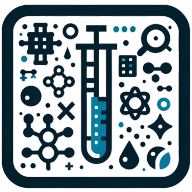In the ever-evolving world of medical science, drug testing technology is not left behind. This blog post delves into the latest trends that are shaping the landscape of drug testing technology. From advancements in accuracy to speed and non-invasive methods, we will explore how these trends are revolutionizing the field and what we can expect in the future.
The Rise of Rapid Drug Testing
Rapid drug testing technology is gaining momentum in the industry. It offers quick results, often within minutes, making it a preferred choice for many. This technology uses immunoassays to detect the presence of drugs or their metabolites.
While traditional drug testing methods can take days to provide results, rapid drug testing technology offers a significant advantage in terms of speed. This is particularly useful in situations where immediate results are crucial, such as roadside drug testing by law enforcement or emergency medical situations.
Moreover, rapid drug testing technology is also cost-effective. It eliminates the need for expensive laboratory equipment and trained personnel, making it an attractive option for low-resource settings. However, it's important to note that while rapid drug testing offers many advantages, it is not without its limitations. For instance, it may not be as accurate as laboratory-based testing methods, and the results may be affected by various factors such as the type of drug, the individual's metabolism, and the timing of the test.
Advancements in Accuracy
Accuracy is paramount in drug testing technology. False positives or negatives can have serious implications, from wrongful accusations to missed treatment opportunities. Fortunately, advancements in drug testing technology are improving accuracy rates.
One such advancement is the use of liquid chromatography-mass spectrometry (LC-MS). This technology separates compounds in a sample and identifies them based on their mass and charge. LC-MS is highly sensitive and specific, making it a reliable method for drug testing.
Another trend improving accuracy is the use of biosensors. Biosensors are devices that use biological molecules to detect the presence of specific substances. They offer high sensitivity and specificity, and they can be designed to detect a wide range of drugs.
Non-Invasive Drug Testing Methods
Traditional drug testing methods often require invasive procedures, such as blood draws. However, the trend is shifting towards non-invasive drug testing methods. These methods are not only more comfortable for the individual but also reduce the risk of infection and other complications associated with invasive procedures.
One popular non-invasive drug testing method is saliva testing. Saliva testing is easy to administer and can detect recent drug use. It's also less likely to be tampered with compared to urine testing, making it a reliable method for drug testing.
Another emerging non-invasive drug testing method is hair testing. Hair testing can provide a longer window of detection compared to other methods. It can detect drug use up to 90 days in the past, making it a valuable tool for long-term drug monitoring.
Personalized Drug Testing
Personalized drug testing is a trend that is gaining traction in the field. This approach tailors drug testing based on the individual's unique genetic makeup. It can provide valuable insights into how an individual metabolizes certain drugs, which can help in determining the most effective treatment plan.
Pharmacogenomics is a field that studies how genes affect a person's response to drugs. By understanding an individual's genetic profile, healthcare providers can predict how they will respond to certain medications. This can help in avoiding adverse drug reactions and improving treatment outcomes.
The Role of Artificial Intelligence
Artificial Intelligence (AI) is making its way into drug testing technology. AI algorithms can analyze vast amounts of data quickly and accurately, making them a valuable tool for drug testing.
AI can be used to predict drug interactions, identify patterns in drug use, and even detect new drugs. It can also help in interpreting complex drug testing results, reducing the risk of human error.
Moreover, AI can also aid in the development of new drug testing methods. By analyzing data from existing methods, AI can identify areas for improvement and suggest new approaches.
The Future of Drug Testing Technology
The future of drug testing technology looks promising. With advancements in technology and a better understanding of human biology, we can expect more accurate, faster, and non-invasive drug testing methods.
One potential trend is the use of nanotechnology in drug testing. Nanotechnology involves the manipulation of materials on an atomic or molecular scale. It can be used to develop highly sensitive and specific drug testing methods.
Another potential trend is the integration of drug testing technology with digital health platforms. This could allow for real-time monitoring of drug use, providing valuable data for treatment and prevention strategies.
Wrapping Up: The Evolution of Drug Testing Technology
The landscape of drug testing technology is evolving rapidly, with advancements in speed, accuracy, non-invasiveness, personalization, and the use of AI. These trends are not only improving the reliability of drug testing but also making it more accessible and user-friendly. As we look to the future, we can expect further innovations that will continue to revolutionize the field of drug testing technology.

